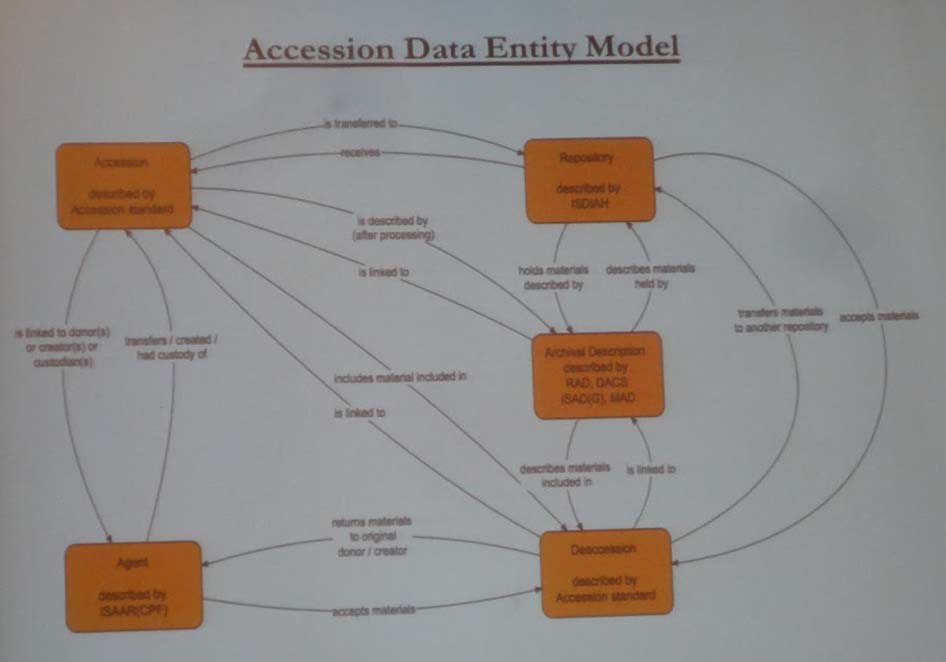Yesterday, I had the privilege to speak to my colleagues in the archival profession at the Joint Annual Meeting of the Council of State Archivists and the Society for American Archivists in Atlanta, Georgia, about an important topic to me and an ongoing focus for us at the National Archives: diversity and inclusion.

In my remarks, I said:
I’m pleased to be able to join you this morning and especially pleased to have been slotted just before Chris Taylor takes the stage because it gives me an opportunity to talk about Diversity and Inclusion from my perspective. I was also inspired by Dennis Meissner’s column on “Building an Inclusive Profession” in the Spring issue of Archival Outlook in which he reminds us that “We remain too white, too traditional, perhaps too blind to the varieties of diversity that surround us.”
One of the joys of heading an Executive Branch Agency in the Federal Government is the what sometimes seems daily delivery of White House Executive Orders or Directives or Initiatives. For me each one presents more than just a compliance mandate, each one provides what I call an insinuation opportunity—is there a way to insinuate the National Archives and our work into the new venture. And, better still, where can we provide some leadership to the rest of the Federal Government. So, I remember when in the Summer of 2011, Executive Order 13583 hit my desk. “Establishing a Coordinated Government-wide Initiative to Promote Diversity and Inclusion.”
I think anyone who has worked with me over the years can testify to my commitment to creating a diverse and inclusive work environment—from my early days at MIT working with the Cambridge Public Schools to introduce kids to careers in libraries and the appointment of our first community outreach librarian; at Duke winning the President’s first Diversity Award for our work with the Office of Institutional Equity; and at the New York Public Library with the most diverse clientele of any public library in the world, ensuring that our staff of 2500 was as diverse as our user profile.
President Obama’s Executive Order spells out the Administration’s commitment: “Our National derives strength from the diversity of its population and from its commitment to equal opportunity for all. We are at our best when we draw on the talents of all parts of our society, and our greatest accomplishments are achieved when diverse perspectives are brought to bear to overcome our greatest challenges.”
The Order was followed 120 days later with the “Government-Wide Diversity and Inclusion Strategic Plan” challenging each agency to RECRUIT from a diverse, qualified group of potential applicants to secure a high-performing workforce drawn from all segments of American society; CULTIVATE a culture that encourages individuals to contribute to their full potential and further retention; and DEVELOP structures and strategies to equip leaders with the ability to manage diversity, be accountable, measure results, refine approaches on the basis of such date, and institutionalize a culture of inclusion.
At the National Archives, this mandate is reflected in Goal Four of our most current Strategic Plan: “Build Our Future Through Our Staff” where we commit to implementing innovative practices and tools to recruit, sustain, and retain a 21st Century workforce. So let me tell you how we are turning those promises into action.
Our Office of Equal Employment Opportunity is responsible for the management of our Diversity and Inclusion Program—the proactive side of EEO providing a number of services and educational opportunities for all employees in an effort to attract, sustain, and retain a diverse highly qualified workforce from the nation’s best and brightest talent available. Through this program, employees are encouraged to promote and support an inclusive culture that embraces the Agency’s values of collaboration, innovation, and learning. We strive to foster a work environment that recognizes individuals for their unique perspectives and experiences, establishing a culture where all employees are included and are able to contribute to their full potential.
The Diversity and Inclusion Program has three components:
The Affirmative Employment Program (AEP) created to assist the Agency in establishing and maintaining a model EEO program to ensure that our workforce is representative of the Nation we serve. This is accomplished through the AEP initiatives—The Special Emphasis Program and the Disability Program.
The Special Emphasis Program (a Federal Government wide program) was launched at NARA in November 2013 to assist in identifying gaps and providing recommendations to management officials and employees on matters the affect equal employment opportunities in the workplace. And who better to work as change agents than the employees themselves? We now have 57 volunteer Special Emphasis Program Managers throughout the agency in 15 states ranging from grade level GS3 to GS14. These folks are a resource to managers and supervisors, employees, and prospective applicants throughout the employment cycle—outreach, recruitment, hiring, employee development and advancement, and retention. The assist in the evaluation of policies, procedures, and practices as well as in the elimination of potential or existing barriers.
An integral component of the Affirmative Employment Program is our Disability Program which handles reasonable accommodation requests; collects and analyzes data to assist in the recruitment, hiring, and advancement of persons with disabilities; provides training and educational awareness for managers and supervisors; and manages our Agency-wide American Sign Language program.
The second component of our D and I Program is Targeted Outreach and Recruitment which partners with our Human Resources personnel to provide consultation services to hiring managers in an effort to hire qualified diverse candidates; and manages our Summer Diversity Internship Program. This year 11 qualified interns worked with nine NARA program offices.
And the last D and I component is our suite of Workplace Culture Programs. One is our D and I Education Program which focuses on educating agency leaders and employees about inclusive behaviors that impact employee engagement. It offers a comprehensive approach to cultivating a diverse workforce as well as fostering and sustaining a more innovative, inclusive, and respectful workplace. It also provides a wide range of tools to help increase the behaviors during day-to-day engagement—training using a variety of delivery methods focusing on awareness, attitudes and behaviors, knowledge and skill, and policy and practice. Some of the most important training deals with dignity and respect in the workplace; stereotypes and bias; fostering a diverse and inclusive workplace; hiring and interviewing through a diverse and inclusive lens; and other soft skills training in support of employee engagement.
Lastly our newest effort is the creation of Employee Affinity Groups. These are self-forming NARA communities of interest who raise cultural awareness, enable collaboration and knowledge, share, and promote personal growth. Remember, that we are an agency of 3000 spread across the country, so the opportunity to develop community this way is especially important to our goal of creating One NARA. Launched in 2015, we now have six Employee Affinity Groups.
Stonewall—serving the LGBTQ community
IKE—serving our veteran community
Hispanic and Latino Organization (HALO)
disABILITY—serving our disabled community
Women’s Affinity Group (WAG)—serving NARA women
Say It Loud!—serving our African-American community
As you can see, we employ a wide variety of approaches and opportunities in an effort to create a culture which embraces diversity and inclusion. We are making a commitment from the top of the Agency to ensure that this is core to who we are and how we do business. Are we there yet? No. But I am confident that together we can create a more inclusive work for NARA and for the Federal Government.












 This document — “A Plan of Bridge Town, in the Island of Barbadoes”– is part of the
This document — “A Plan of Bridge Town, in the Island of Barbadoes”– is part of the 











![By Marco di Bartolomeo Rustici (Own work) [Public domain], via Wikimedia Commons](https://fsuspecialcollections.files.wordpress.com/2016/08/santa_maria_dei_servi_e_del_bigallo_codice_rustici.jpg?w=279&h=300)
 Myrtis “Myrt” Herndon, FSU alumna and friend of Heritage Protocol & University Archives, passed away in March 2016. Myrtis graduated from FSU in 1954 with a degree in physical education and was involved with various campus athletics around campus. She served as the Intramural Manager for the University Recreation Association Women’s Division, secretary of the Theater Dance Group, and was a longtime member of the F Club. While in college, Myrtis received a National rating by the Women’s National Officials Rating Committee in basketball and volleyball, which allowed her to officiate in high school girls’ basketball and volleyball games.
Myrtis “Myrt” Herndon, FSU alumna and friend of Heritage Protocol & University Archives, passed away in March 2016. Myrtis graduated from FSU in 1954 with a degree in physical education and was involved with various campus athletics around campus. She served as the Intramural Manager for the University Recreation Association Women’s Division, secretary of the Theater Dance Group, and was a longtime member of the F Club. While in college, Myrtis received a National rating by the Women’s National Officials Rating Committee in basketball and volleyball, which allowed her to officiate in high school girls’ basketball and volleyball games.

 Hosts & Champions Open Day
Hosts & Champions Open Day




























